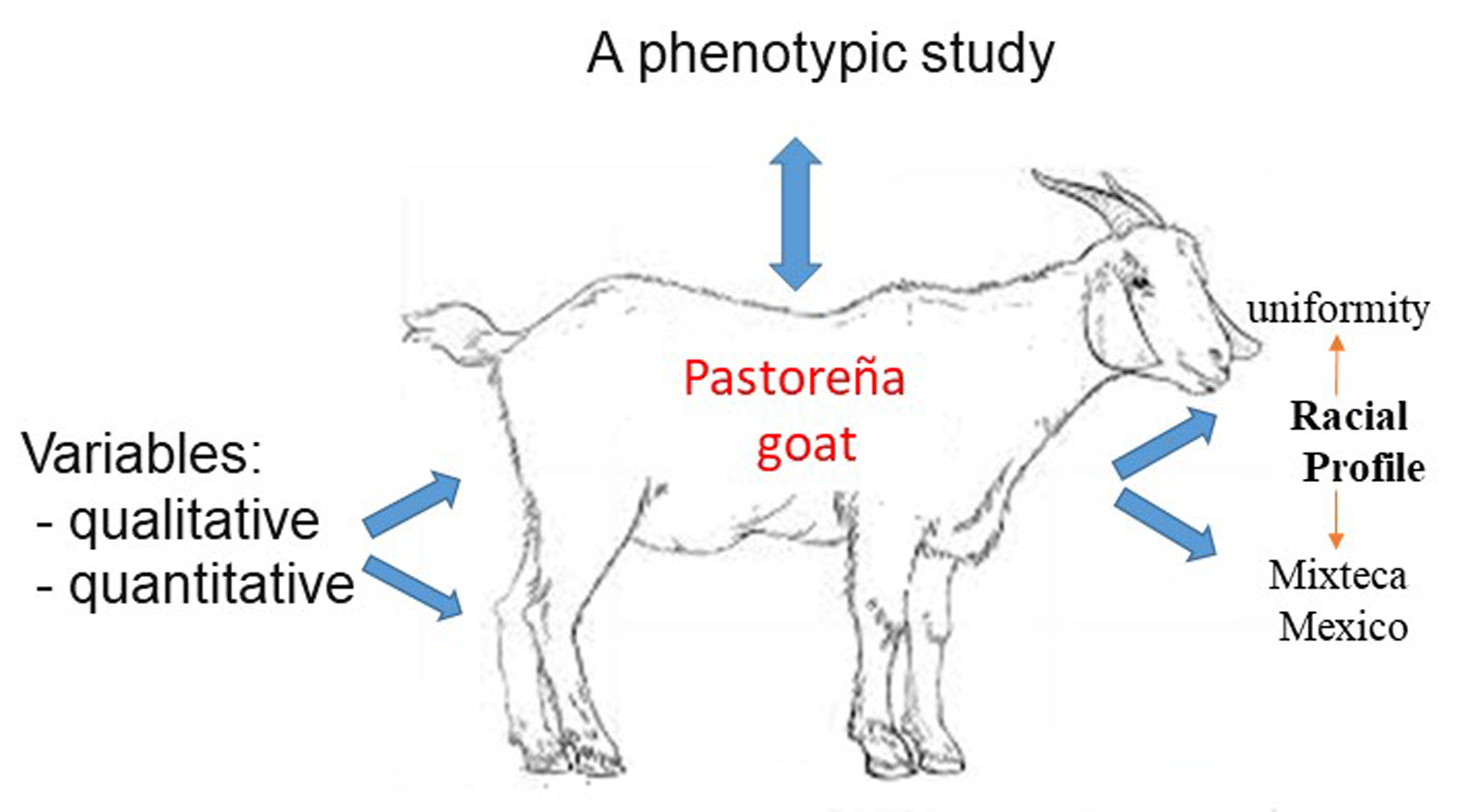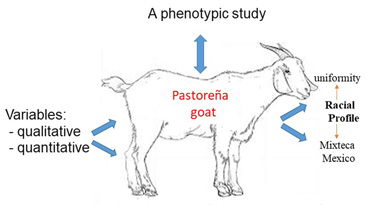Morphostructural variability in the Pastoreña goat in different regions of the Mixteca of Mexico: A phenotypic study to establish the racial profile
Keywords:
native goat, transhumance, pastoralismAbstract

In the present study, we evaluated the morphostructural variability of the Pastoreña goat (PG) in Mixteca region of Oaxaca, Mexico. This study was carried out to evaluate five qualitative ranges and thirteen morphometric characteristics of 249 animals (185 females and 64 males) from 2 to 5 years old. Descriptive statistics analysis was performed on the qualitative (QV) morphometric (MV) variables, and variance analysis and Tukey test by sex. The Pearson correlations were calculated for MV, determining the morphostructural harmonic model. The canonical discriminant analysis and analysis of principal coordinates were made for QV and principal component analysis for MV. The results of QV indicated some features in the racial profile of the PG. MV showed sexual dimorphism (p<0.05). The coefficient of variation indicated morphostructural homogeneity. The correlations in MV suggest harmonic-morphostructural and harmonic-median models for females and males, respectively. The multivariate analysis showed similarities in the sampled localities. In conclusion, the qualitative and quantitative variables demonstrated in the PG characterize as a unique goat breed in the Mixteca of Mexico and justify further conservation efforts.
Highlights
- The Pastoreña goats have uniformity within the population of the Mixteca, Mexico.
- The qualitative and quantitative variables estimated in the Pastoreña Goats offer the bases for its conservation.
- The shepherds select the offspring of the Pastoreña goats of the white and creamy-white color.
Downloads

Downloads
Published
How to Cite
Issue
Section
License
Aquellos autores/as que tengan publicaciones con esta revista, aceptan las Políticas Editoriales.










.jpg)




